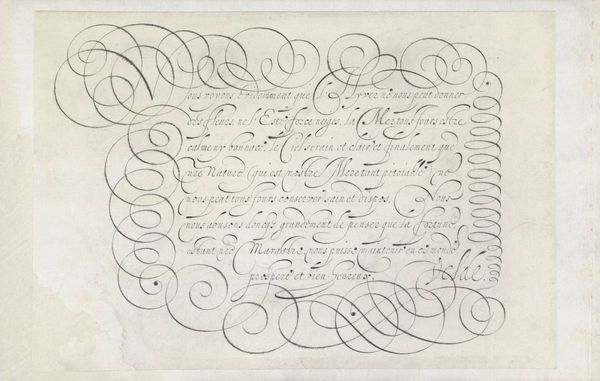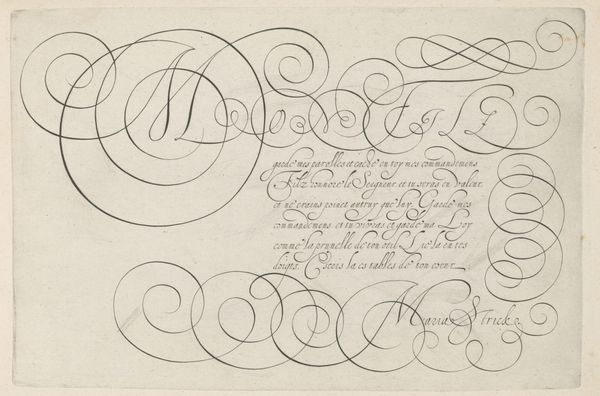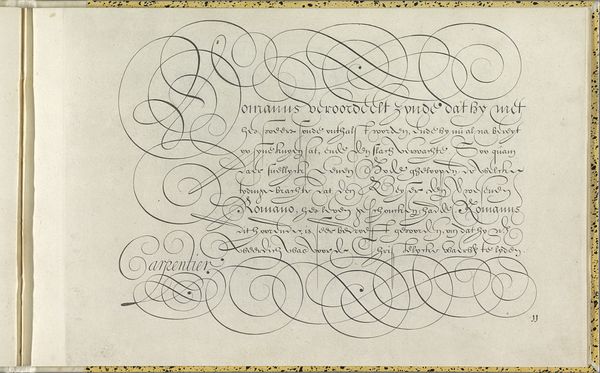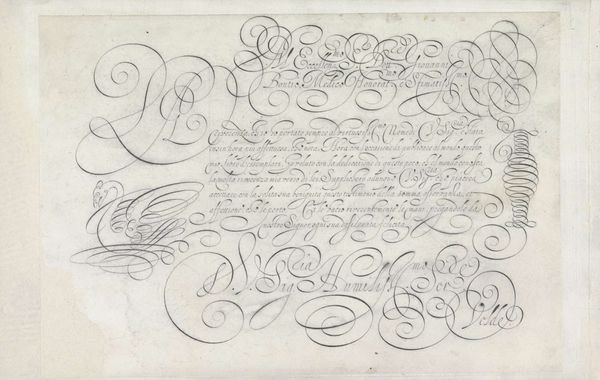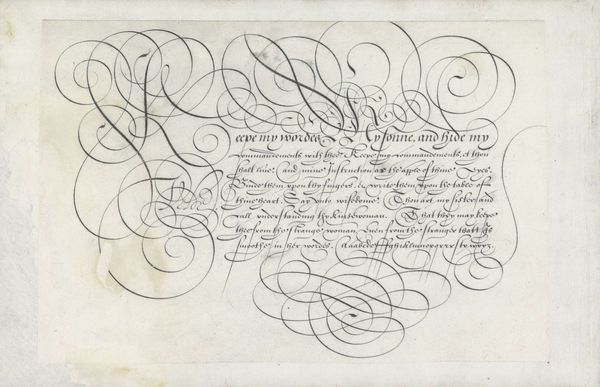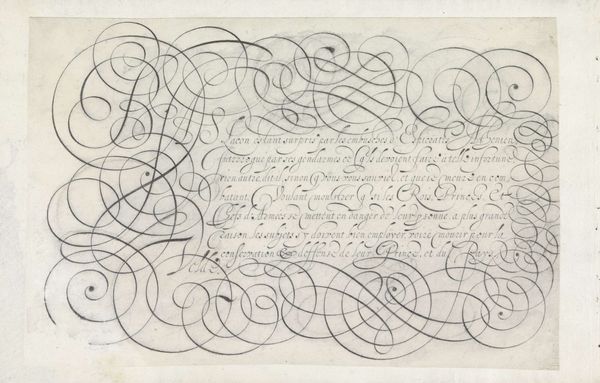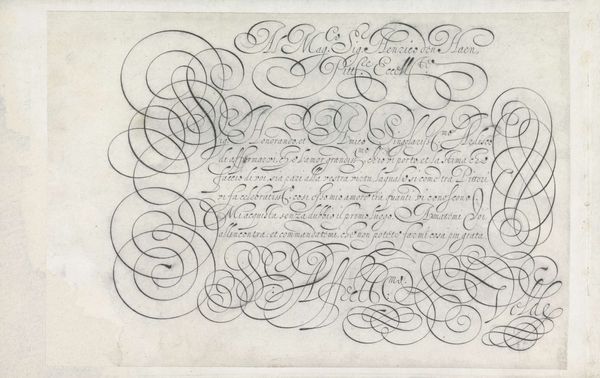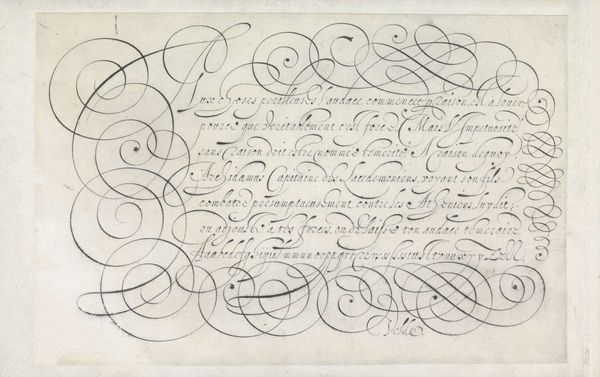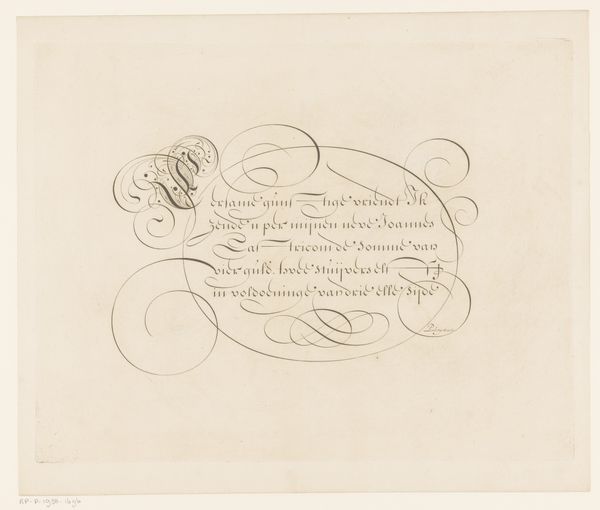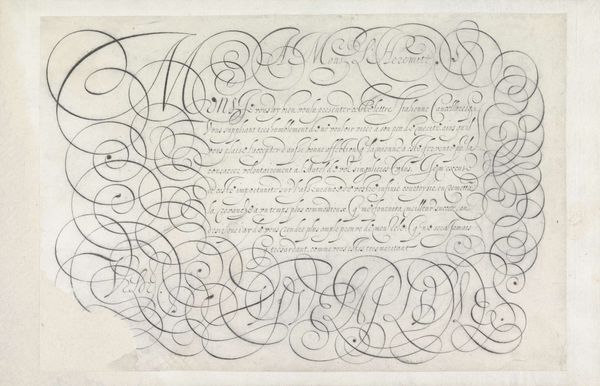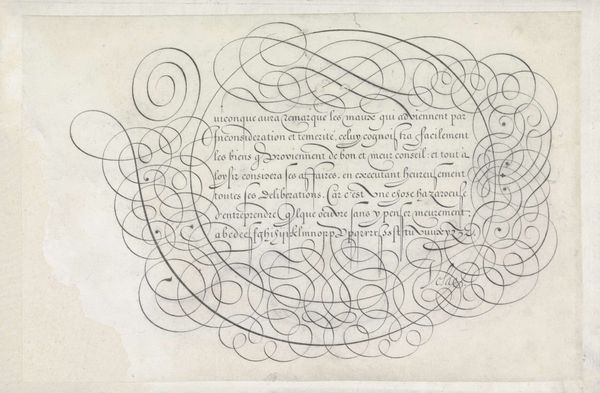
drawing, paper, ink
#
drawing
#
hand-lettering
#
baroque
#
hand lettering
#
paper
#
ink
#
calligraphy
Dimensions: height 192 mm, width 283 mm
Copyright: Rijks Museum: Open Domain
Curator: At first glance, the ink flows almost like an eddy in a stream. It creates such a lively, swirling composition! Editor: Indeed! What we're looking at is a calligraphy sample created around 1618 by Lieven Willemsz. Coppenol. The piece, currently held at the Rijksmuseum, demonstrates his mastery of hand-lettering using ink on paper. The "Schrijfvoorbeeld met de tekst: PHILIPPUS (...)" displays intricate Baroque-style lettering, showing how text could be transformed into an artistic expression in itself. Curator: Yes, the visual weight of the curves and flourishes creates a deep sense of emotional investment. It feels devotional, doesn’t it? Like each curve holds some piece of the cultural memory behind letter-making. What could writing mean to the maker to imbue this much care into the composition of symbols? Editor: Well, handwriting during the Baroque period, particularly calligraphy, carried considerable social weight. Mastering an elegant script was not just a skill but also a marker of education, status, and belonging within certain societal circles. Displays like this functioned something like a modern CV. Curator: It seems counterintuitive that something as practical as lettering becomes an outpouring of the unconscious. It reveals an undercurrent that we have long associated writing with power and expression. There is nothing more symbolic and raw than using handwriting for these purposes. Editor: Exactly! Calligraphy schools and writing masters held significant cultural positions at this time, shaping the tastes and competencies of their pupils and, by extension, the broader aesthetic landscape. Skill and training dictated status. It highlights the institutional structures and societal pressures behind the artistic production of that time. These skills opened certain political doors. Curator: Thank you. Seeing that writing and these artistic forms serve an intrinsic aspect of being, allows us to bridge that moment between the present and past. Editor: And by looking closely at works like this, we can learn about the role that aesthetic expertise played in shaping both personal and professional identities.
Comments
No comments
Be the first to comment and join the conversation on the ultimate creative platform.
